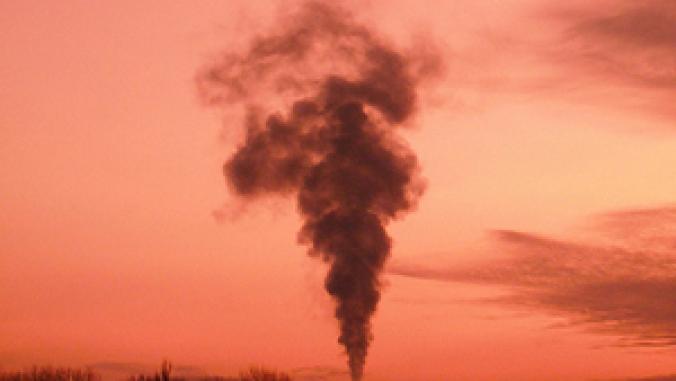Obama Injects $1B into FutureGen 'Clean Coal' Project
<p>The beleaguered program first announced in 2003 will attempt to demonstrate the viability of "clean coal" technology, where carbon dioxide emissions from coal-fired power plants are captured and stored deep within the earth, rather than entering the atmosphere and contributing to climate change.</p>

Image CC licensed by Flickr user psd
President Barack Obama gave a $1 billion boost on Thursday to FutureGen, a beleaguered program aimed at curbing the carbon dioxide emissions generated by the burning of coal for electricity.
FutureGen 2.0 will attempt to demonstrate the viability of "clean coal" technology, where carbon dioxide emissions from coal-fired power plants are captured and stored deep within the earth, rather than entering the atmosphere and contributing to climate change. Emissions from electricity generation is the largest single source of greenhouse gas emissions in the U.S.; coal accounts for roughly half of the country's electricity generation.
Yet carbon capture and storage (CCS) is largely untested at a commercial scale, and critics note the expense of pursuing an unproven technology that requires massive quantities of water. Proponents, including U.S. Secretary of Energy Steven Chu, point out that cheap, but dirty coal will continue to play an important role in power generation, particularly in developing countries China and India.
"Today's announcement will help ensure the U.S. remains competitive in a carbon constrained economy, creating jobs while reducing greenhouse gas pollution," Secretary Chu said in a statement Thursday. "This investment in the world's first, commercial-scale, oxy-combustion power plant will help to open up the over $300 billion market for coal unit repowering and position the country as a leader in an important part of the global clean energy economy."
Then President George W. Bush first announced the project in 2001, with the FutureGen Alliance forming a few years later. Bush shelved FutureGen in 2008, citing costs, but a subsequent report from the Government Accountability Office found the costs were exaggerated. FutureGen's prospects improved when Obama took office.
As with the original project, FutureGen 2.0 will be conducted in Illinois but will differ in a few key ways. FutureGen 2.0 will retrofit an existing 200-megawatt power plant in Meredosia, Ill., owned by Ameren. An oxy-combustion boiler will be installed that can capture roughly 90 percent of the CO2 generated, along with most sulfur oxide, nitrogen oxide, mercury and particulate emissions. It can also create a concentrated CO2 stream that will be transported by a 175-mile pipeline to Mattoon, Ill., where a regional CO2 storage site will be established.
Construction will begin in Spring 2011, with the project beginning operation in 2015, according to DOE spokeswoman Tiffany Edwards. The cost of the project will be covered by the $1 billion in funds from the Recovery Act and $247 million in private dollars. "This new plan will be potentially billions of dollars cheaper than its predecessor," Edwards said in an email.
Cost estimates for the first FutureGen project had ballooned to $2.4 billion, compared to the new price tag of nearly $1.24 billion. The original plan called for the construction of a new coal-fired power plant in Mattoon, from which emissions were to be captured on-site before storage. But the Integrated Gasification Combined Cycle (IGCC) technology that was to be at the center of the first FutureGen plan is already being tested at other facilities around the country, such as in Florida and Indiana, avoiding the need for FutureGen to replicate the process.
The cheaper price tag improves the chances for the project to be completed. It was unlikely that FutureGen would have picked up enough additional members or funding to cover its original plans. In its statement Thursday, the DOE explained the change by noting its National Energy Technology Laboratory identified oxy-combustion as possibly being the least expensive approach to capture CO2 from existing coal-fired power plants.
The project is expected to generate 900 direct jobs in Illinois, along with 1,000 additional jobs for suppliers in the state.
The funds will officially go to the FutureGen Alliance, Amaren Energy Resources, Babcock & Wilcox, and Air Liquide Process & Construction.
Image CC licensed by Flickr user psd.




